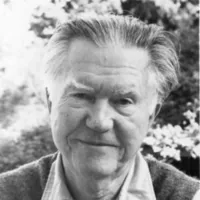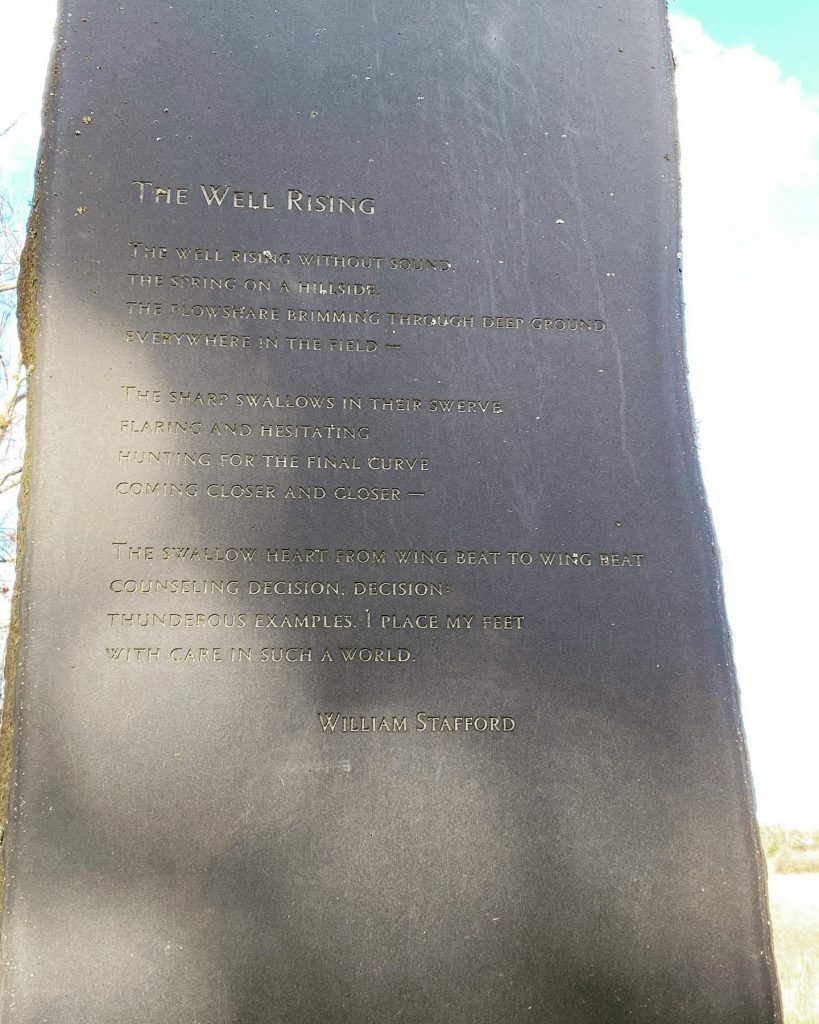 Great hike this month — encountered the poem The Well Rising by William Stafford, engraved in basalt near Lake Oswego Oregon. Here’s some history and context for how this poem was placed in this location, with kudos to Kim Stafford for the detail. William Stafford was born in Kansas in 1914 but spent his last thirty-six years in Lake Oswego, Oregon, where he died at home in 1993. All but one of his sixty books of poetry and prose were published while he lived in Lake Oswego. After his death, a retired English teacher on the city council advocated to create a lasting recognition for William Stafford’s poetry. Beside the Willamette River east of town, at a place that felt a bit like Kansas (cottonwood trees, lazy river, an old railroad bridge, and lots of sky), the city created a memorial consisting of a series of individual lines of poetry, and one complete poem, cut into a ring of nine basalt columns by Oregon artist Frank Boyden. As Kim Stafford writes, this is “a little Stonehenge of poetry.” As Kim Stafford goes on to write, “The space is a kind of room with no roof, a learning place, a silent symposium.”
Great hike this month — encountered the poem The Well Rising by William Stafford, engraved in basalt near Lake Oswego Oregon. Here’s some history and context for how this poem was placed in this location, with kudos to Kim Stafford for the detail. William Stafford was born in Kansas in 1914 but spent his last thirty-six years in Lake Oswego, Oregon, where he died at home in 1993. All but one of his sixty books of poetry and prose were published while he lived in Lake Oswego. After his death, a retired English teacher on the city council advocated to create a lasting recognition for William Stafford’s poetry. Beside the Willamette River east of town, at a place that felt a bit like Kansas (cottonwood trees, lazy river, an old railroad bridge, and lots of sky), the city created a memorial consisting of a series of individual lines of poetry, and one complete poem, cut into a ring of nine basalt columns by Oregon artist Frank Boyden. As Kim Stafford writes, this is “a little Stonehenge of poetry.” As Kim Stafford goes on to write, “The space is a kind of room with no roof, a learning place, a silent symposium.”






